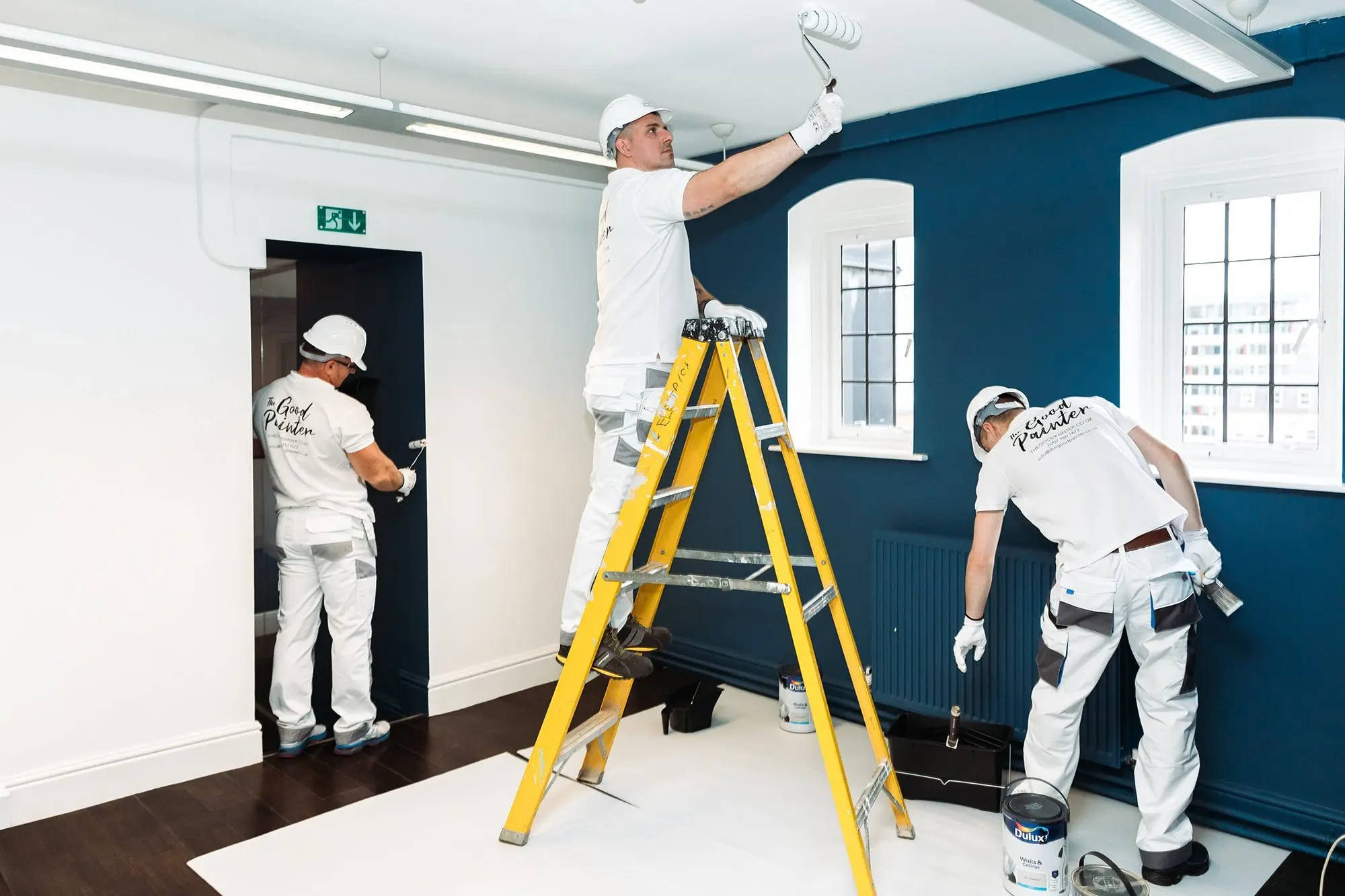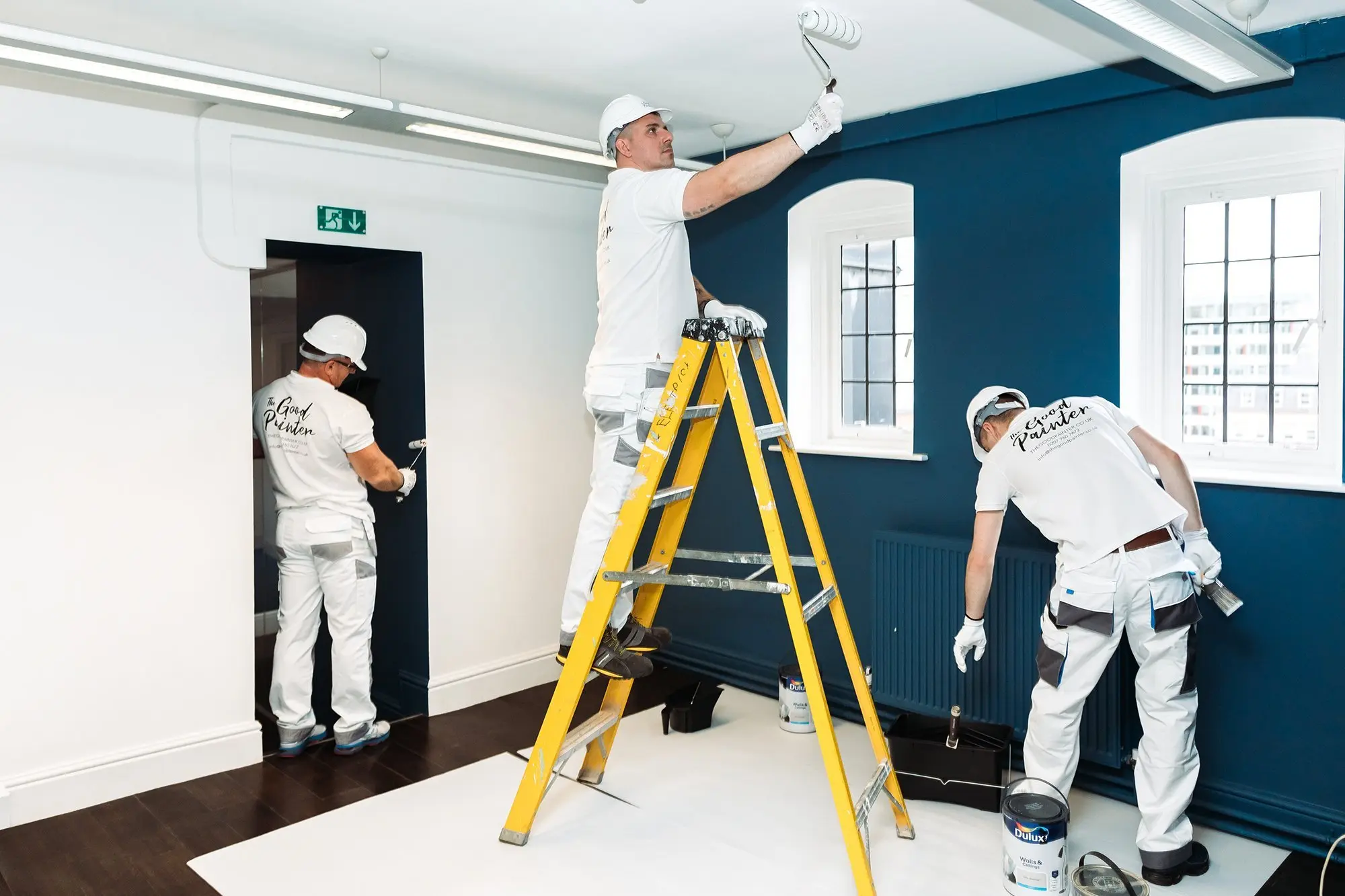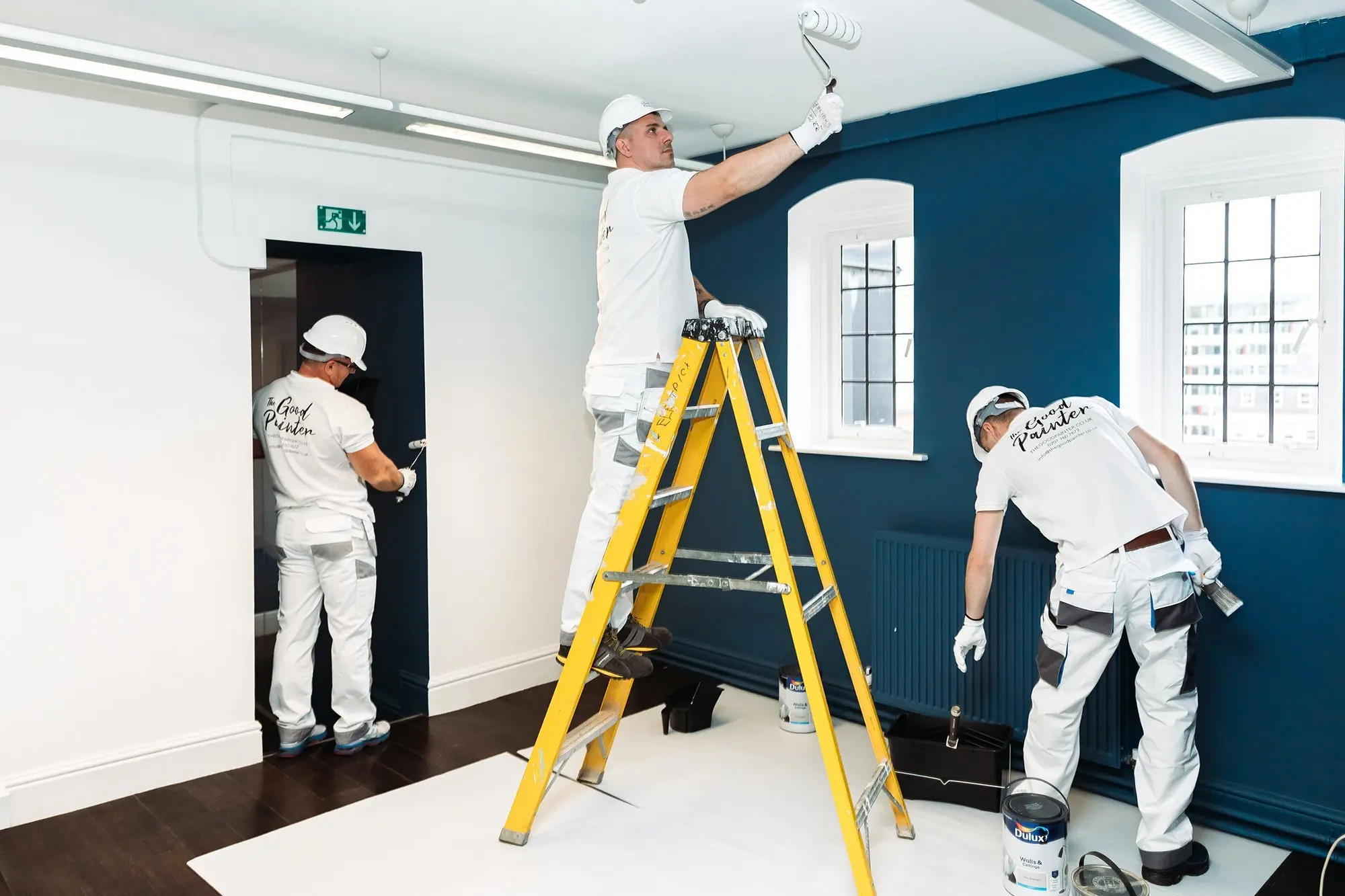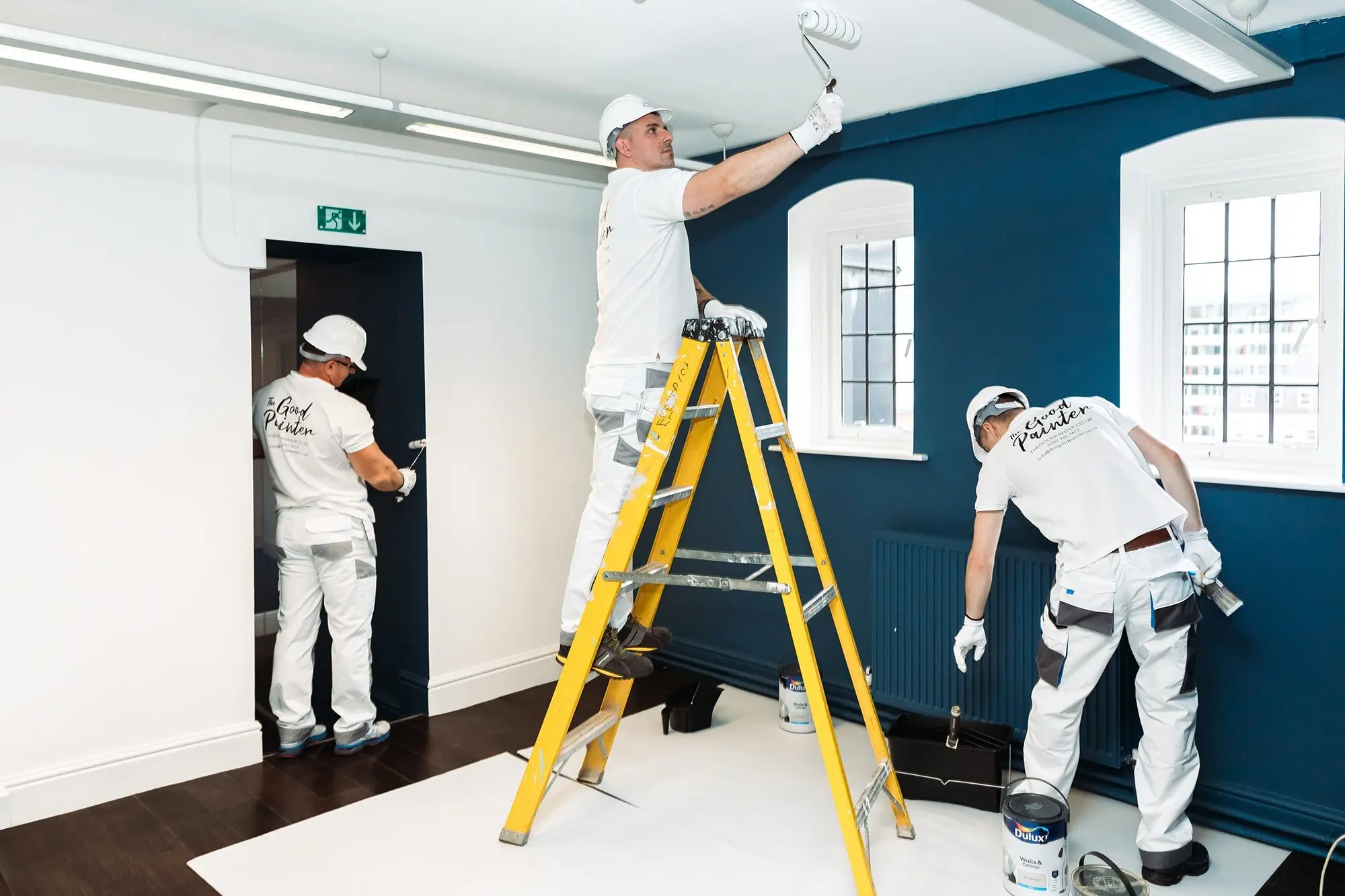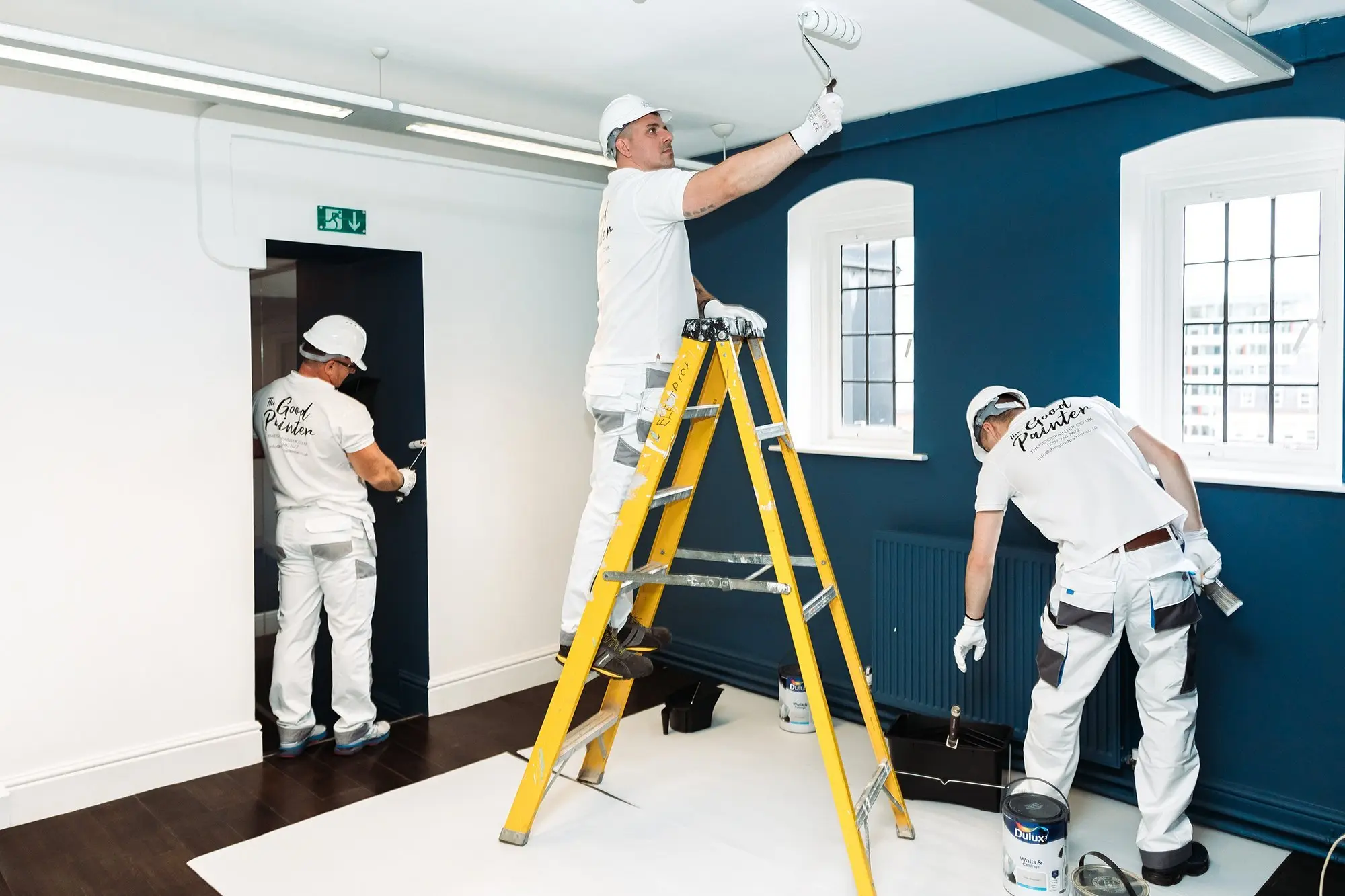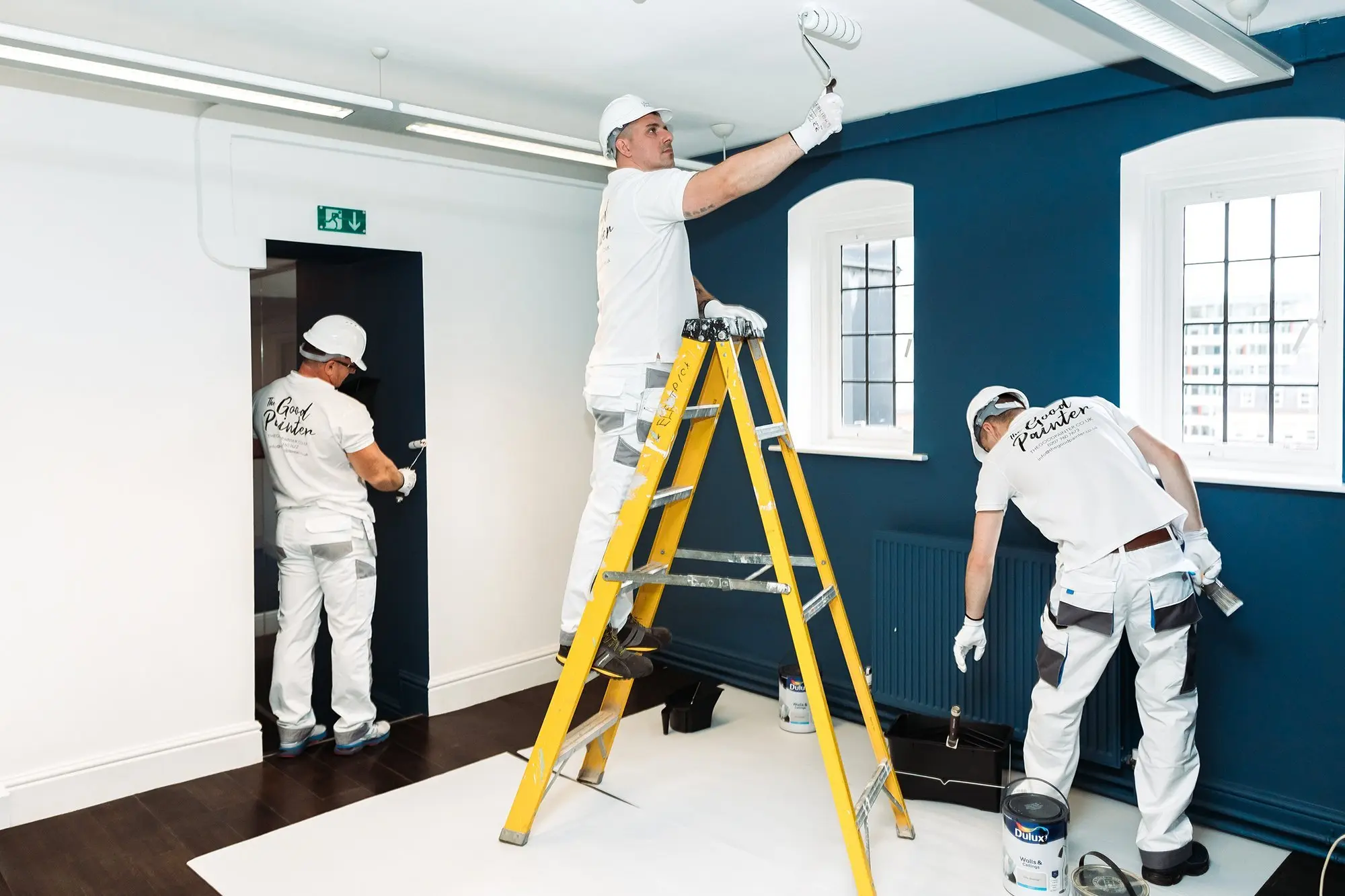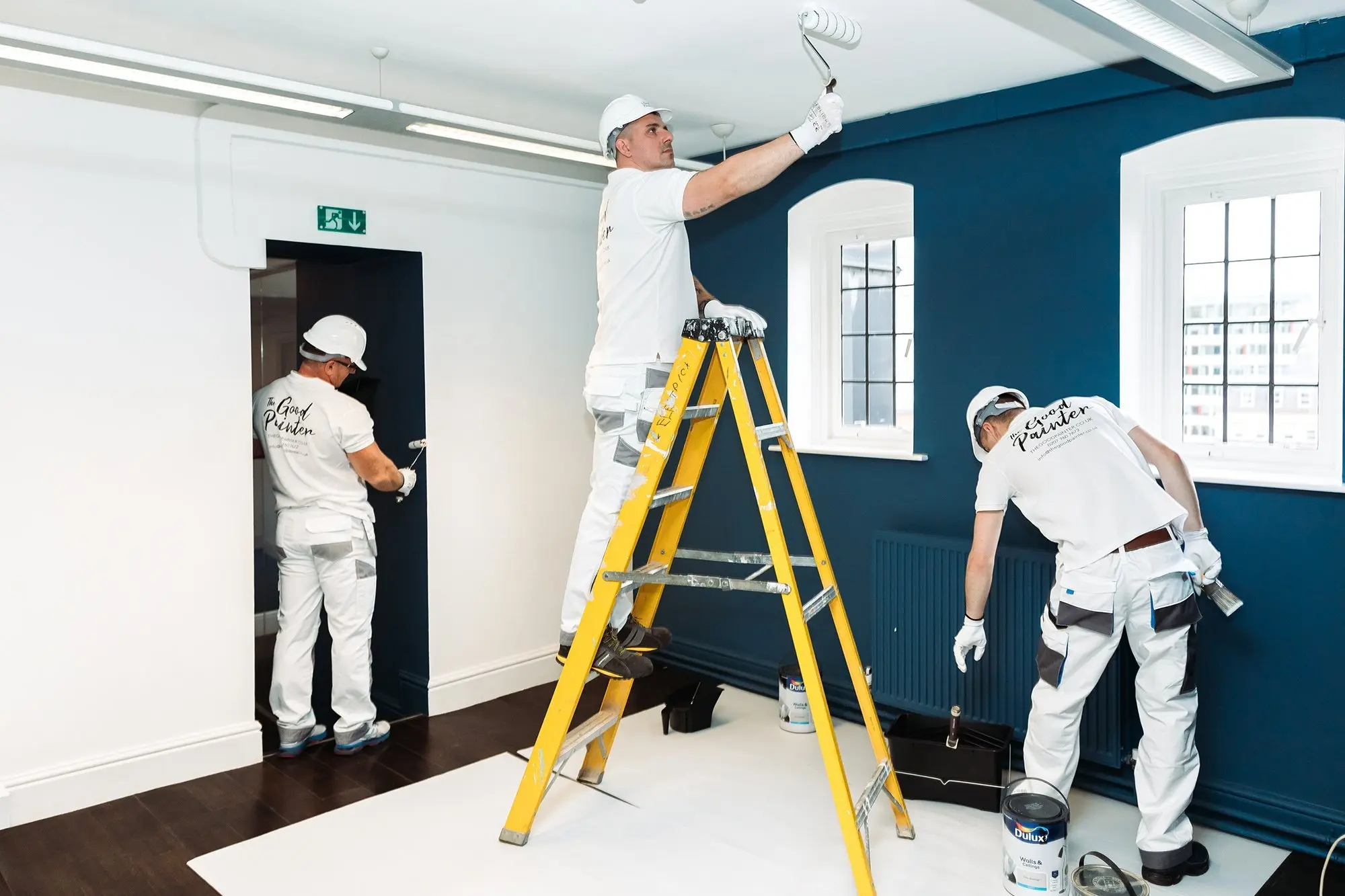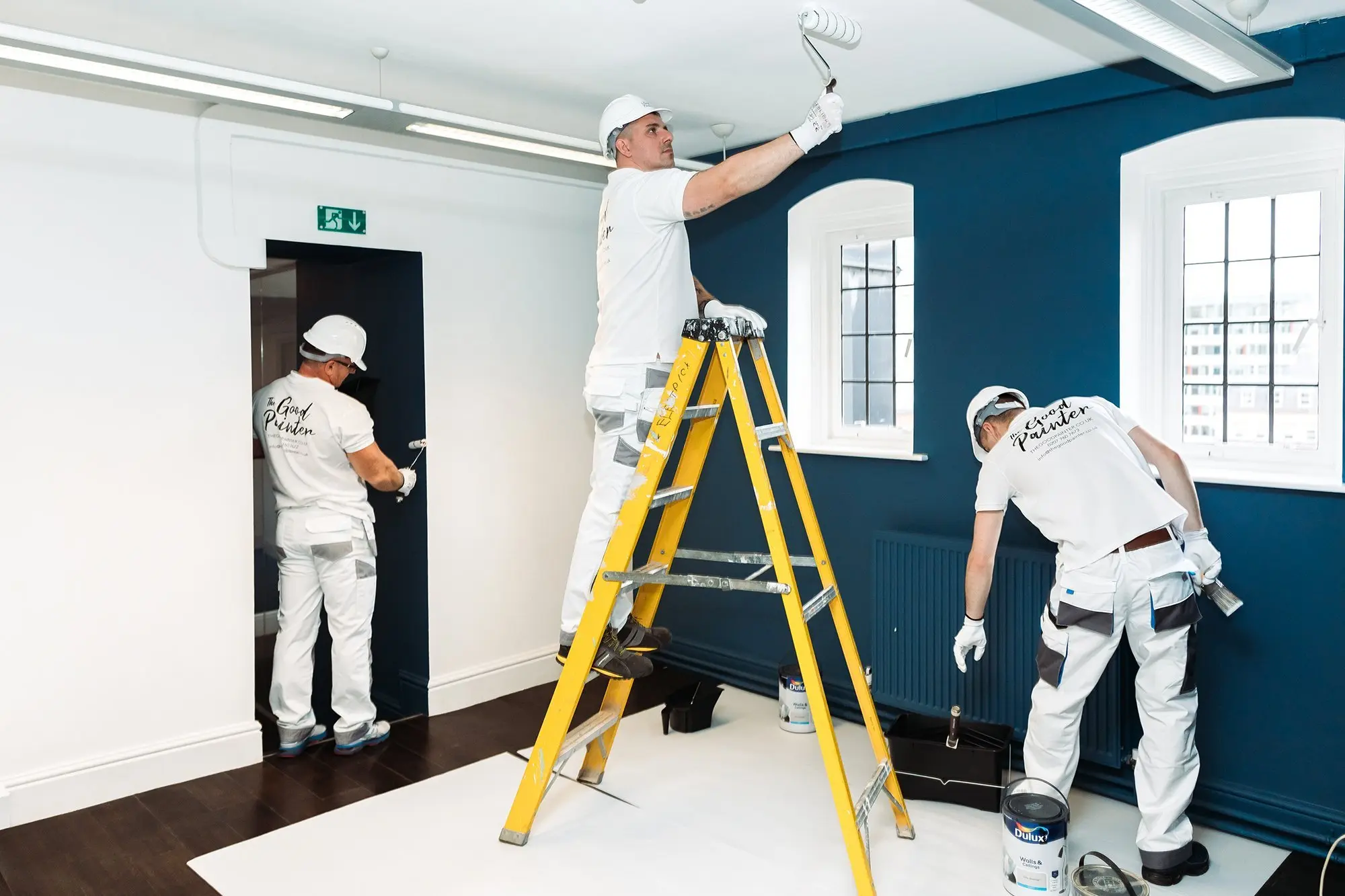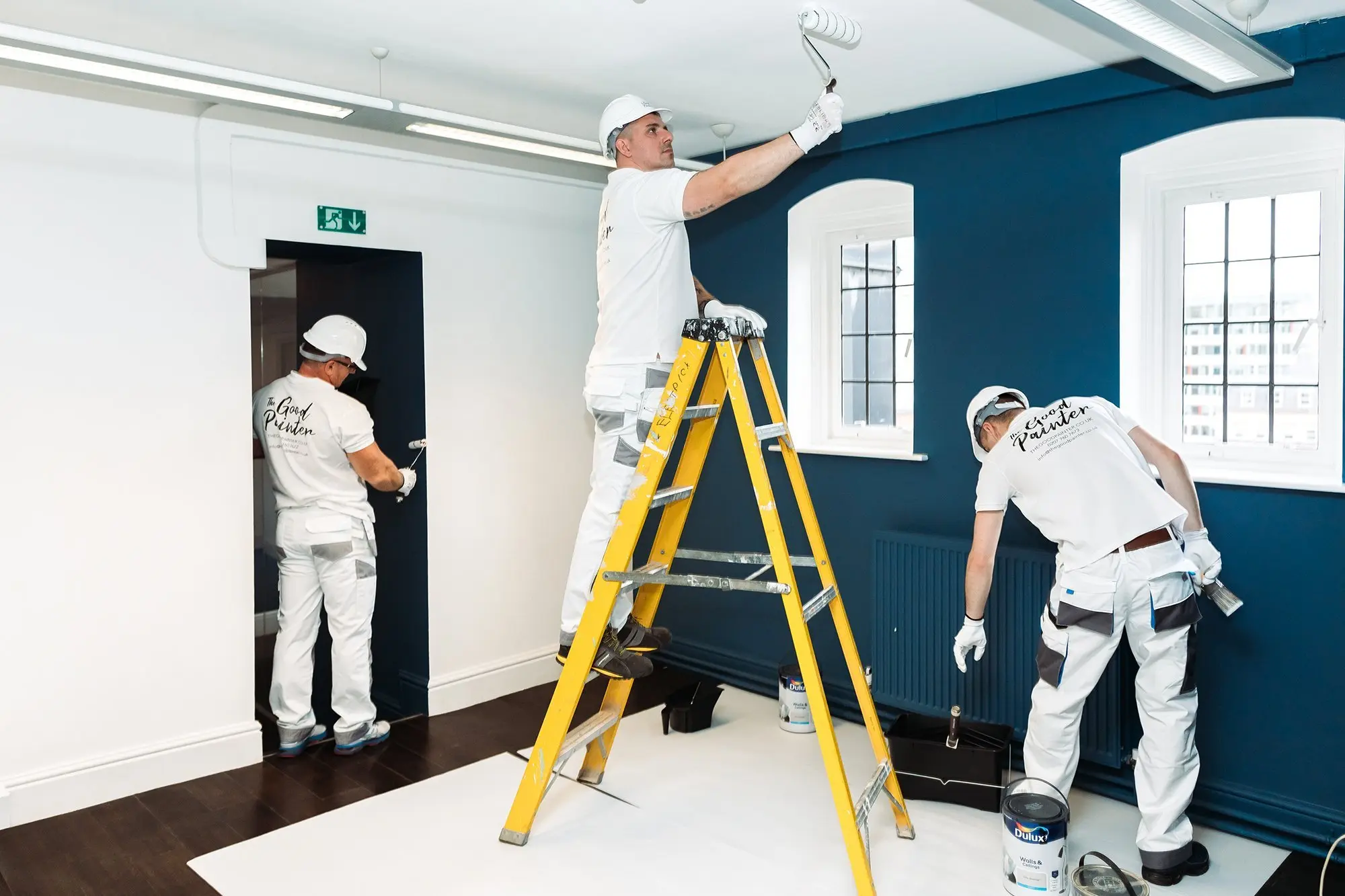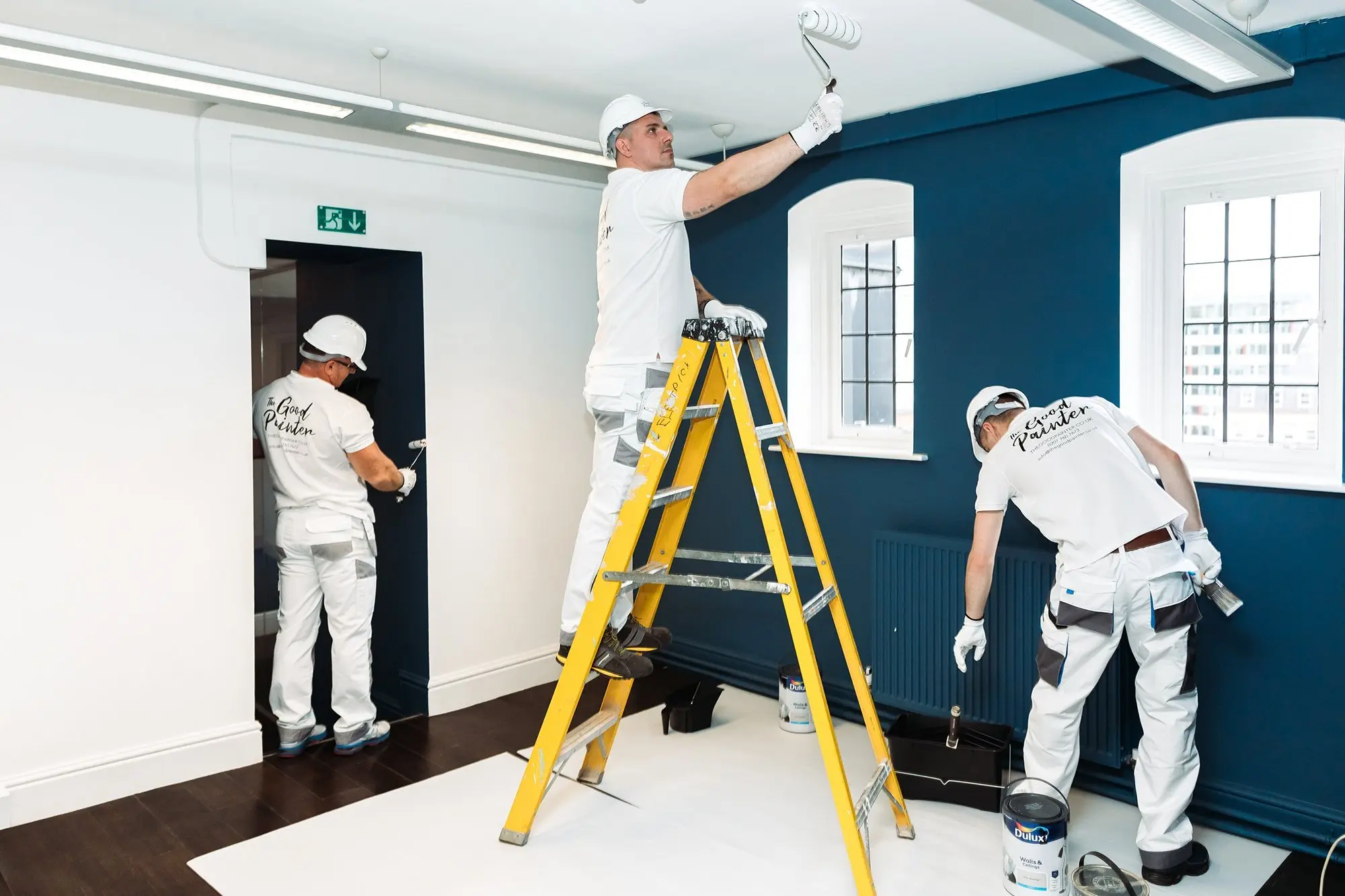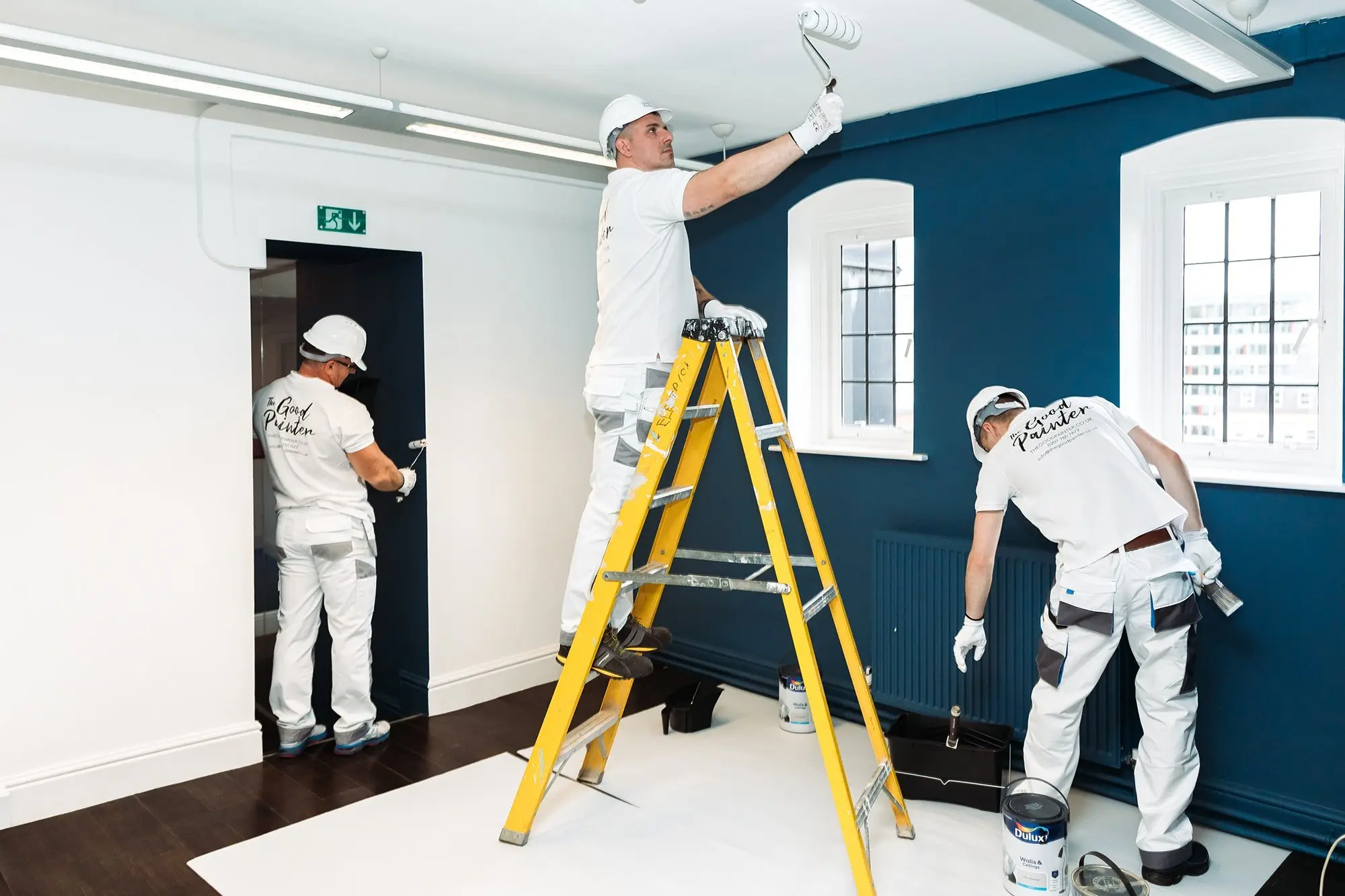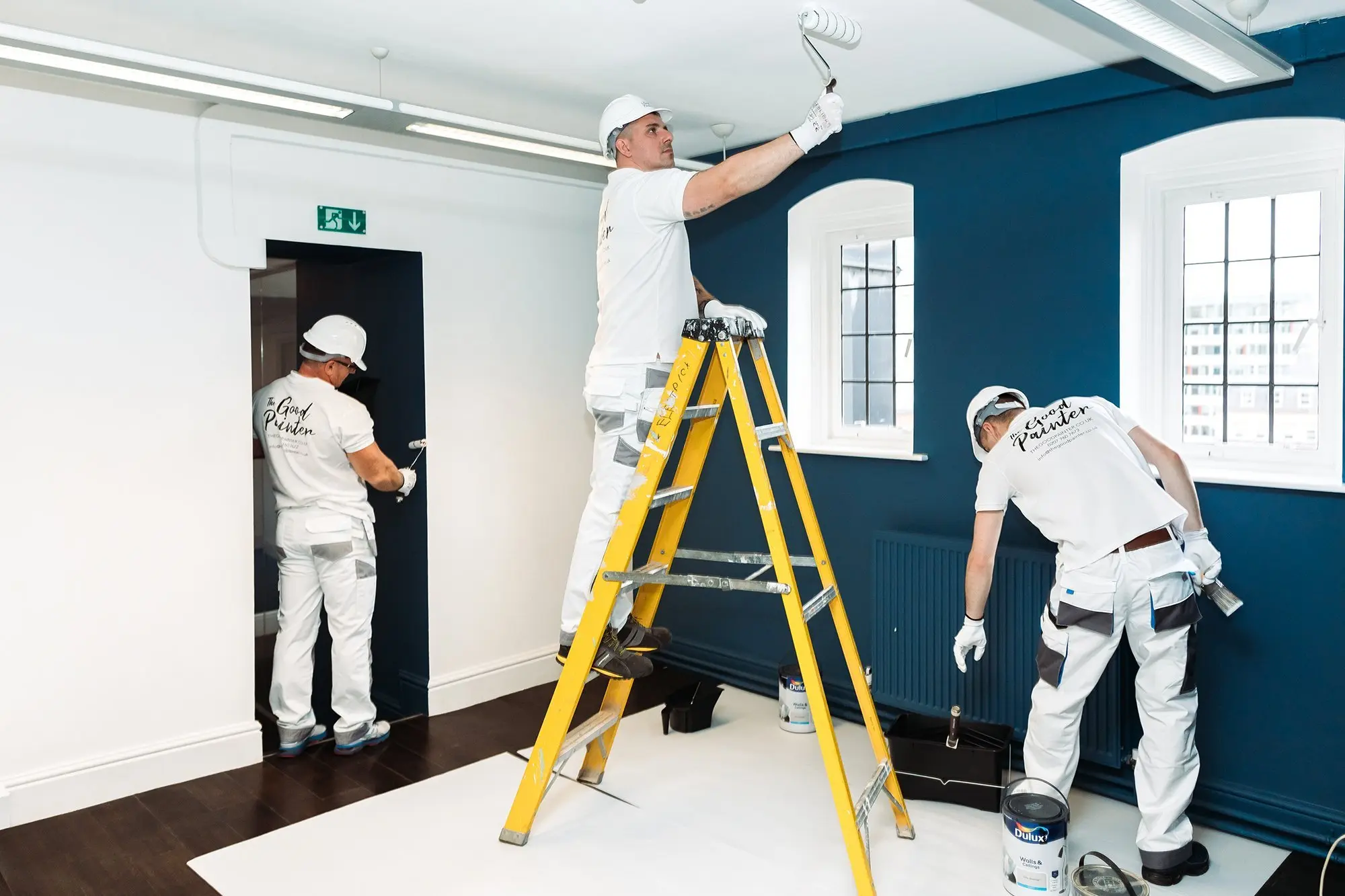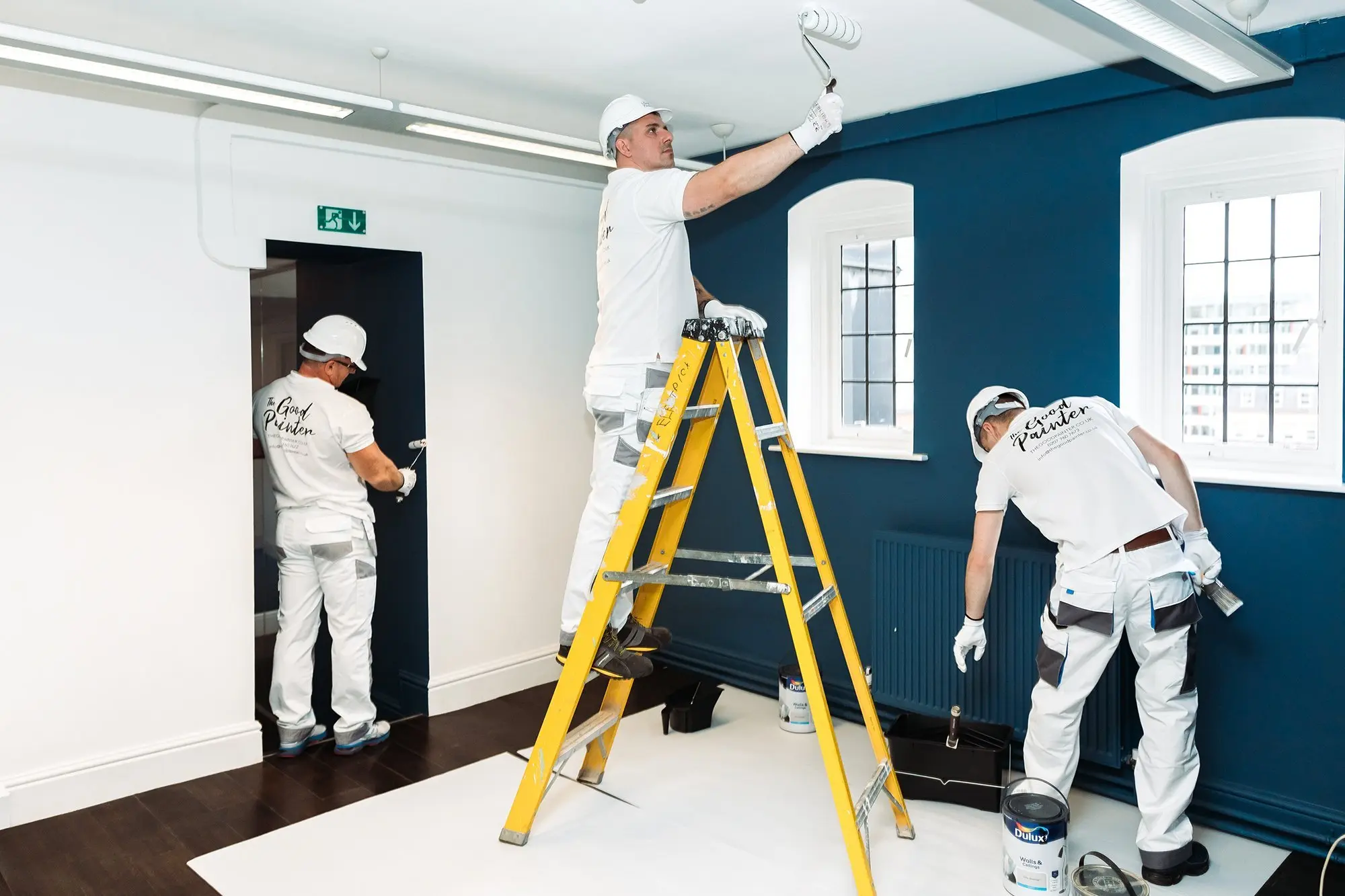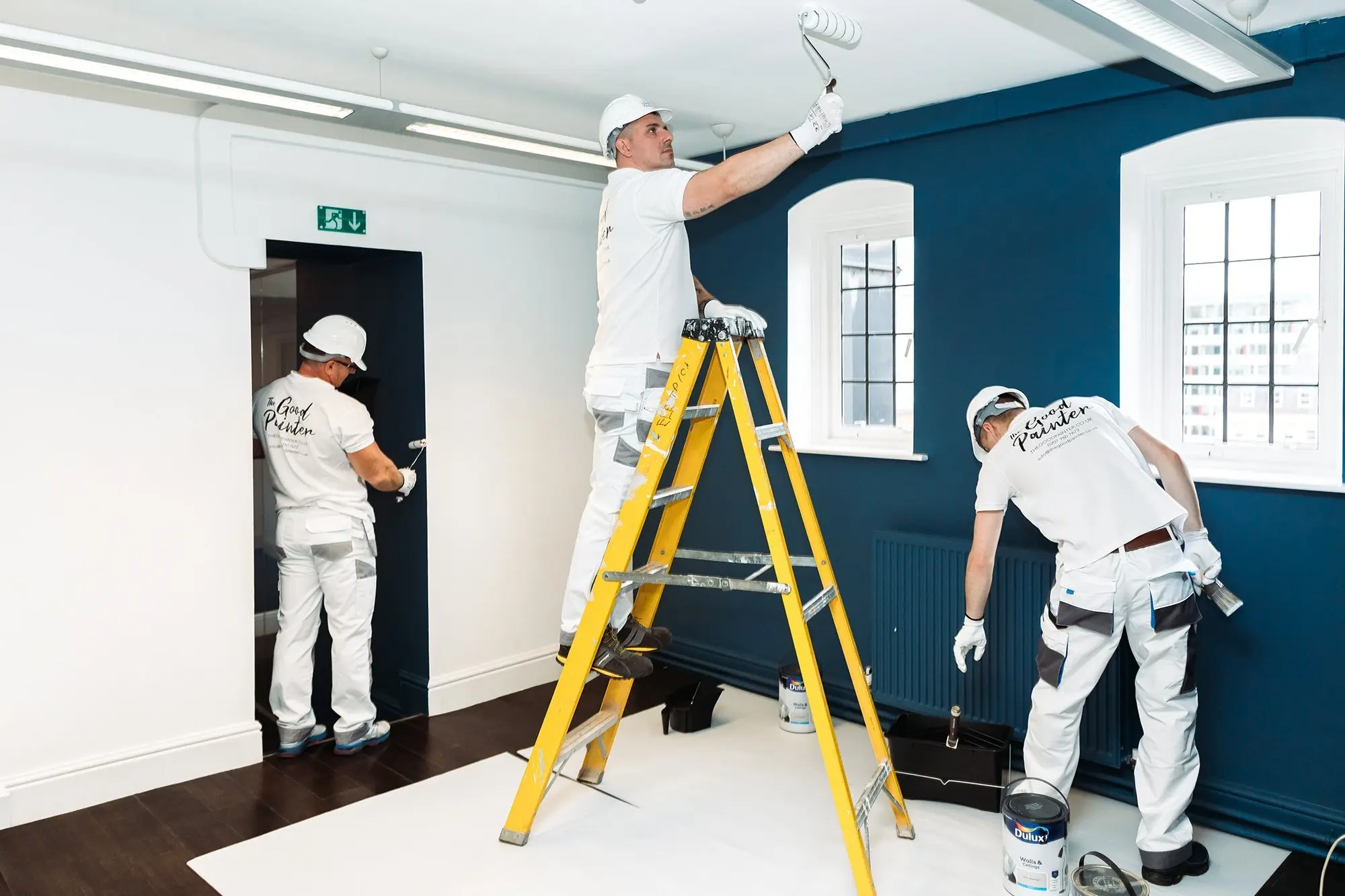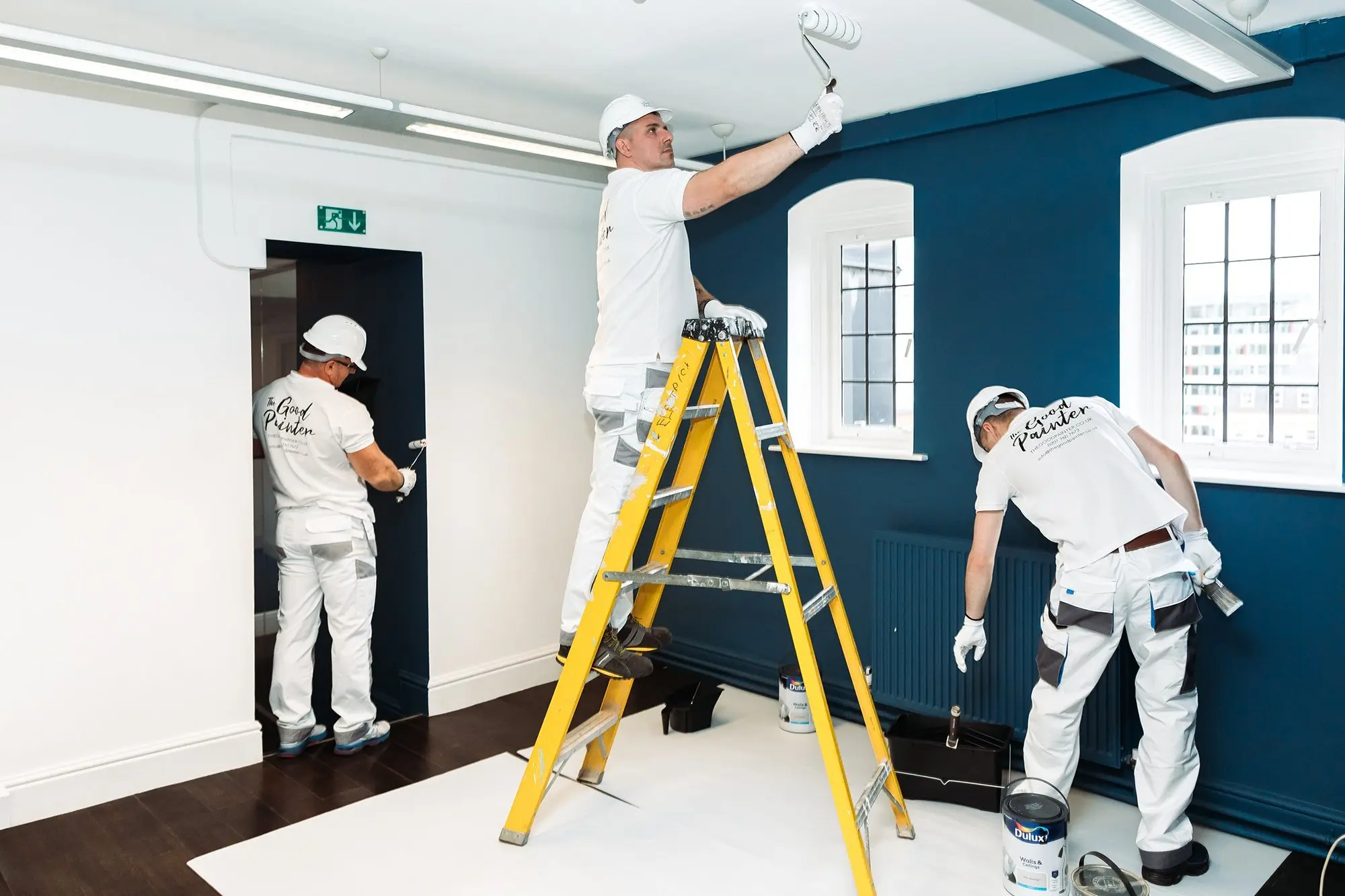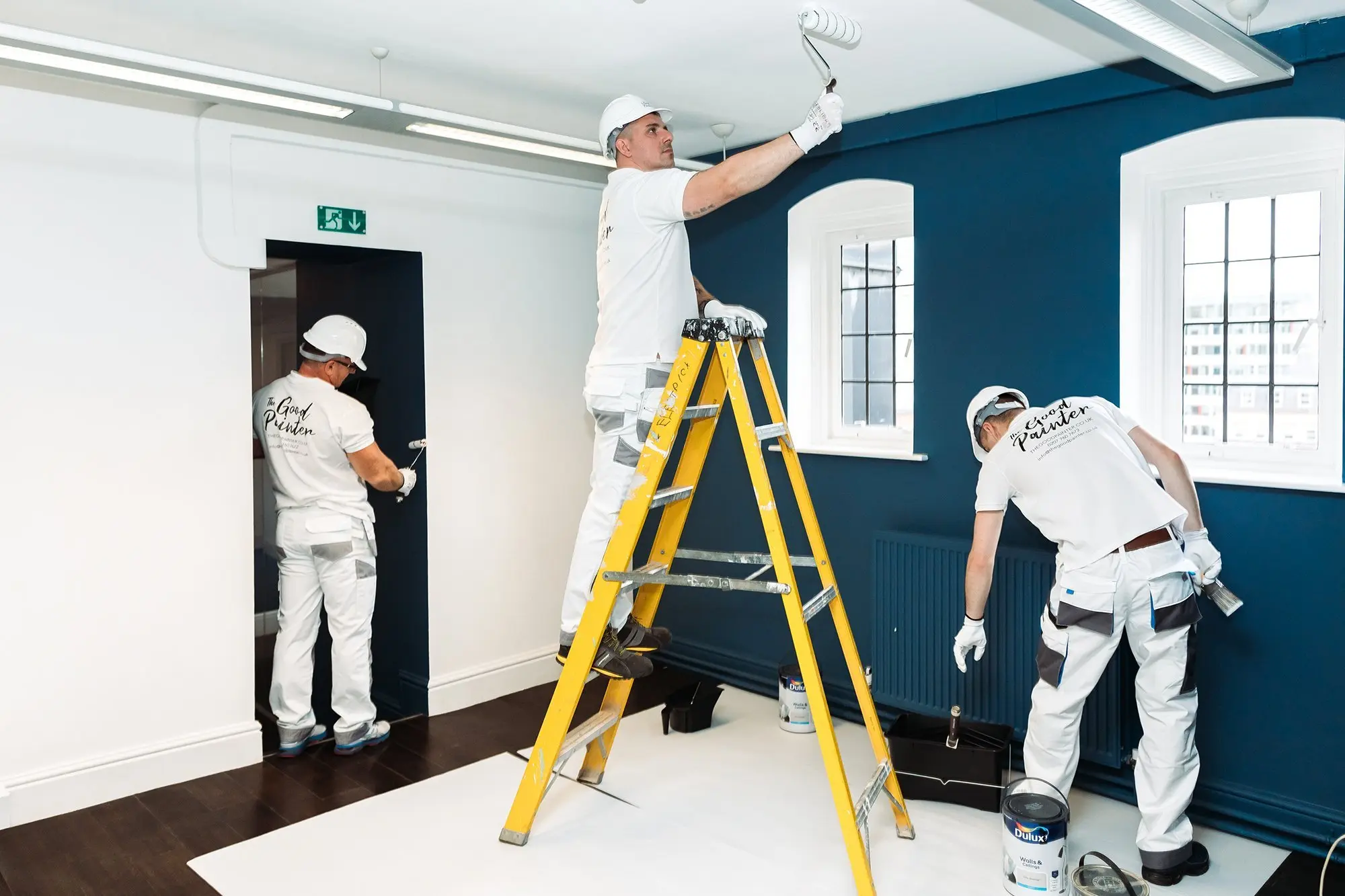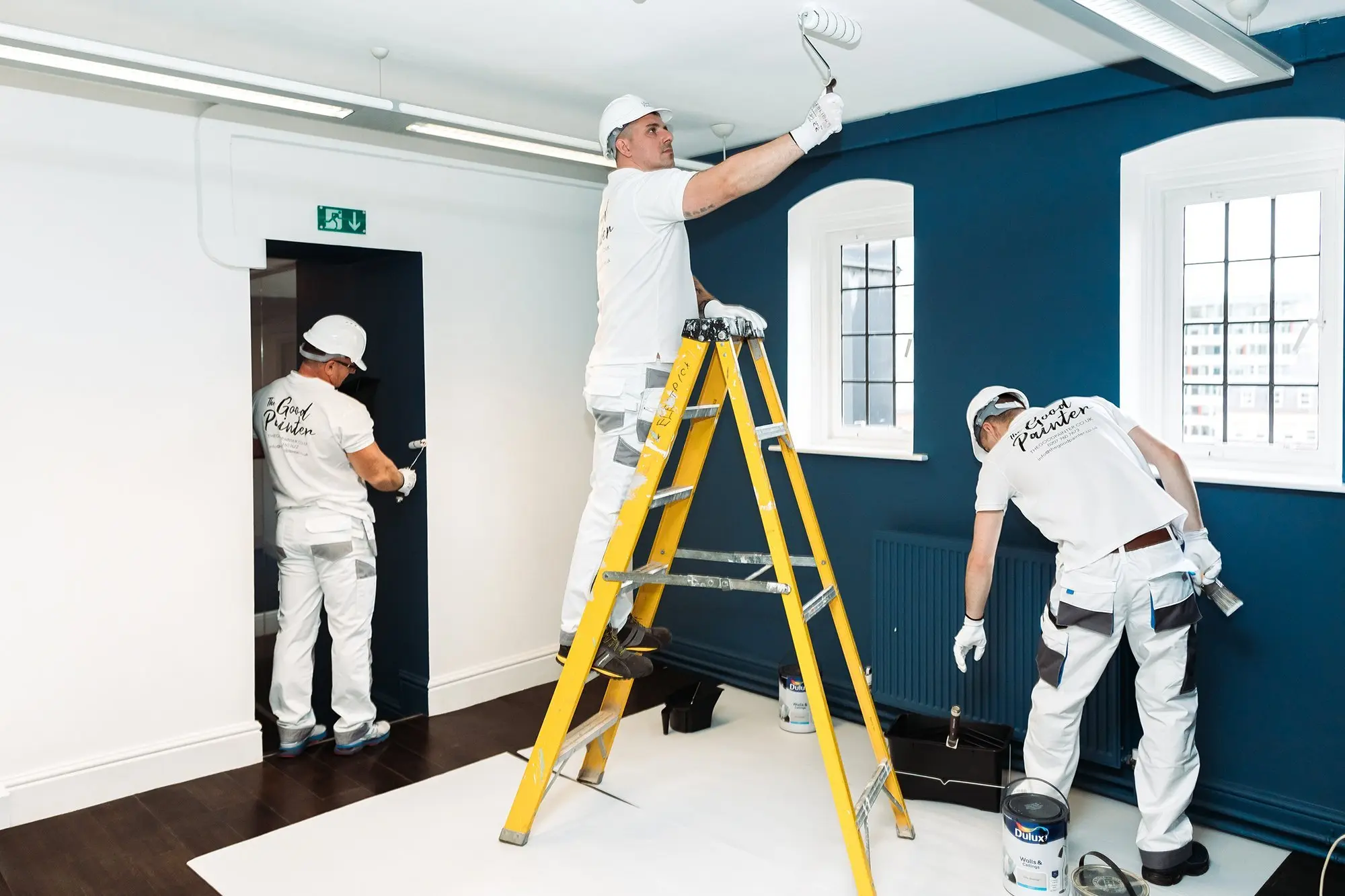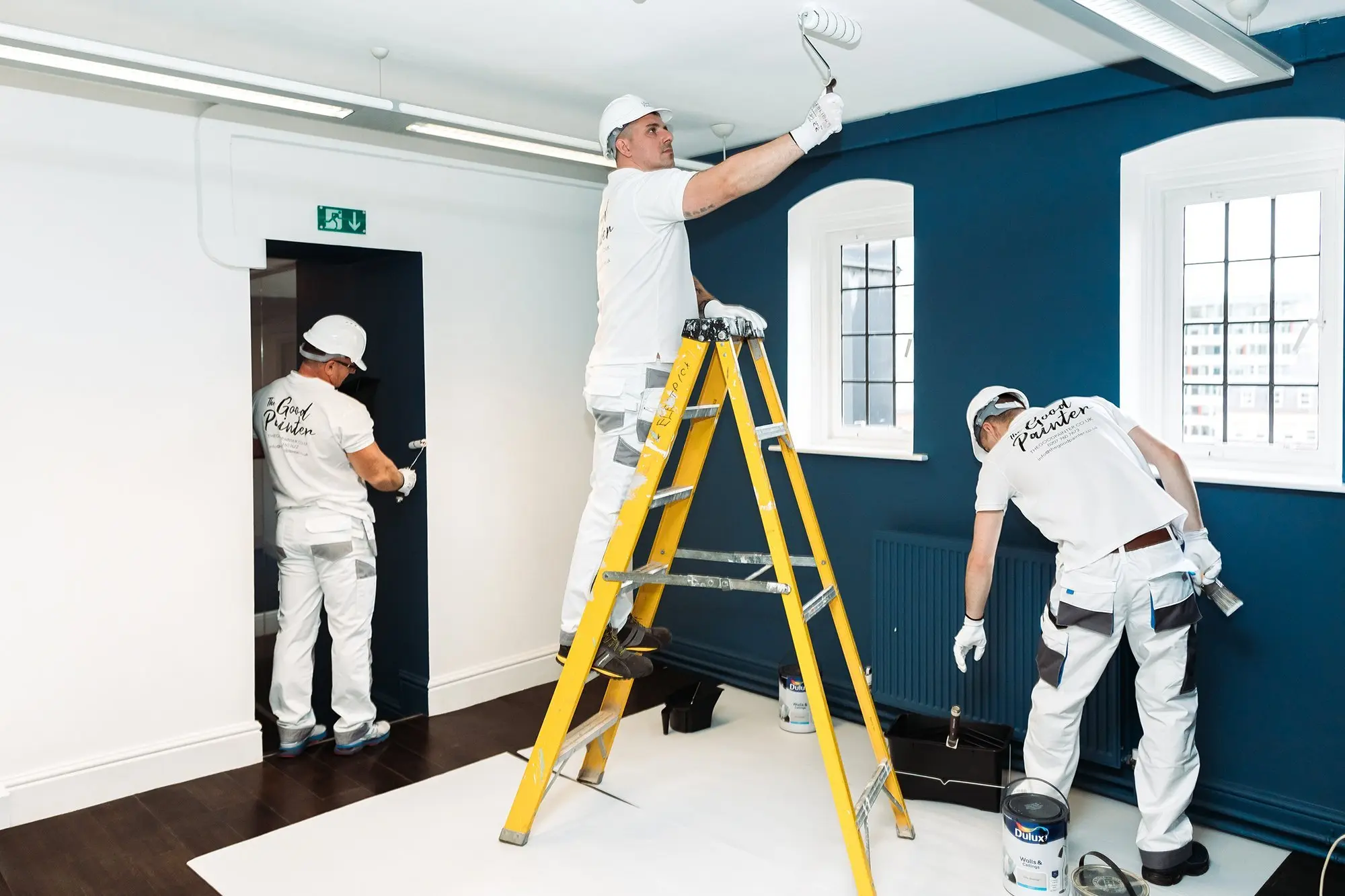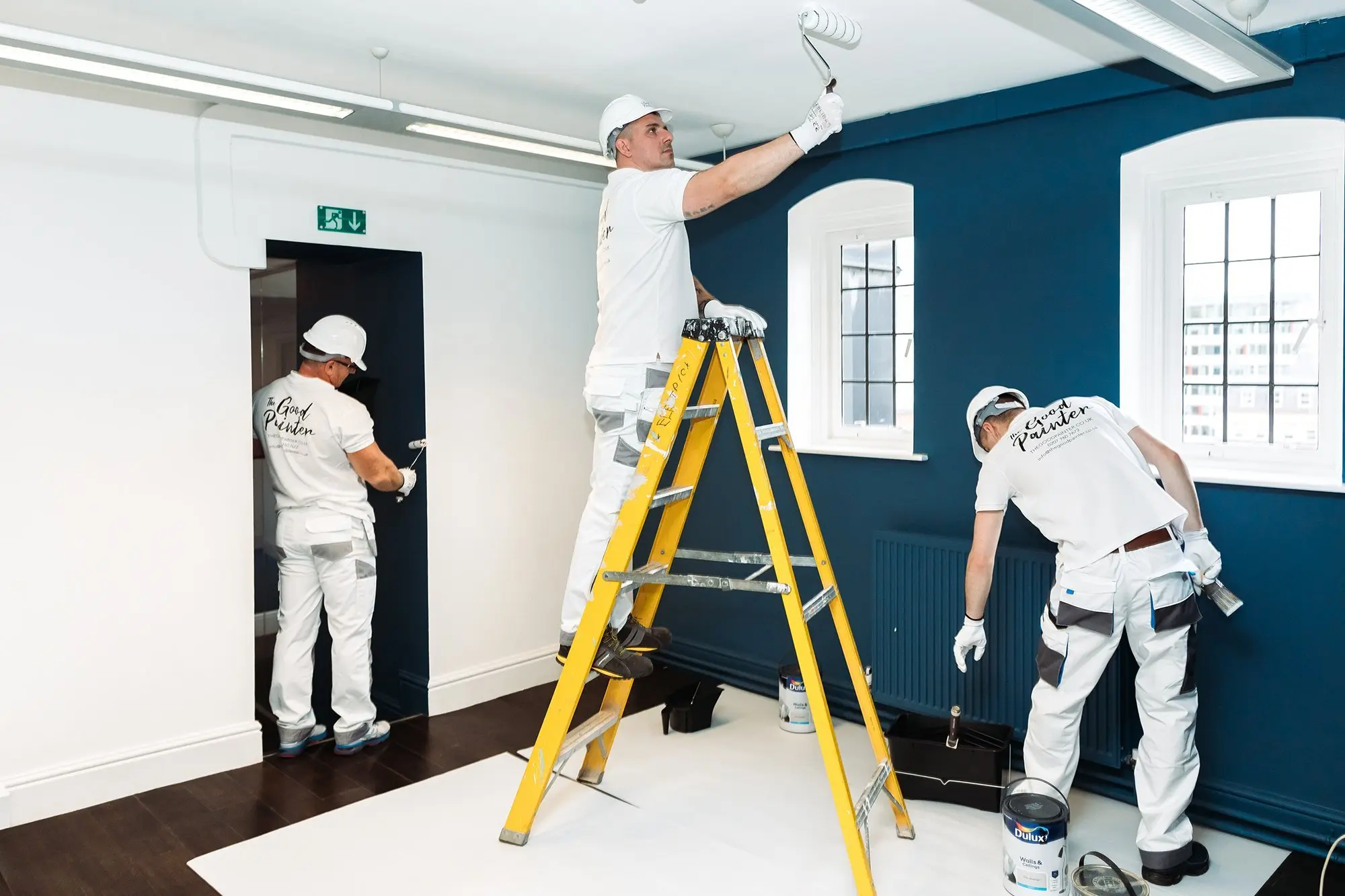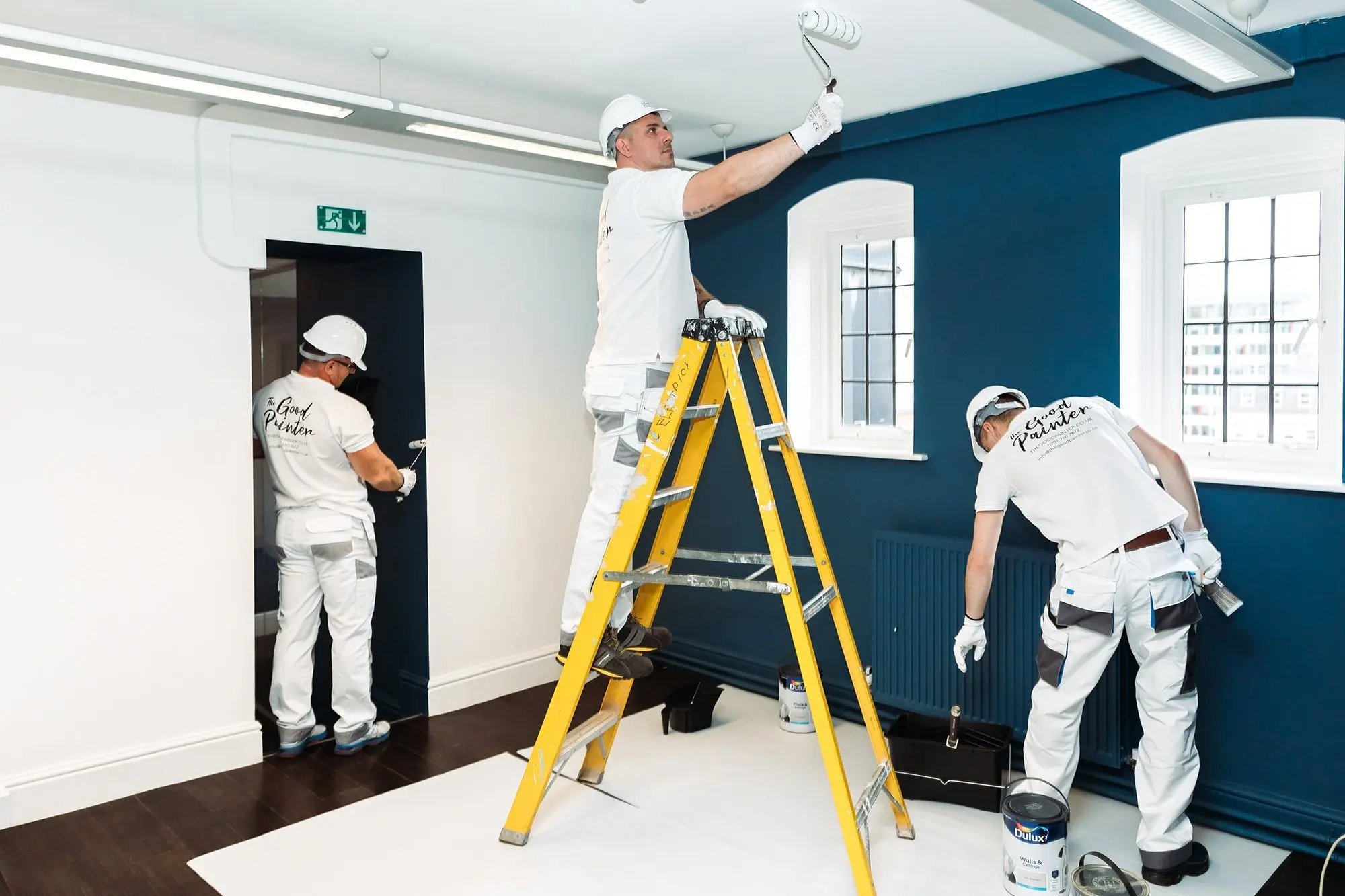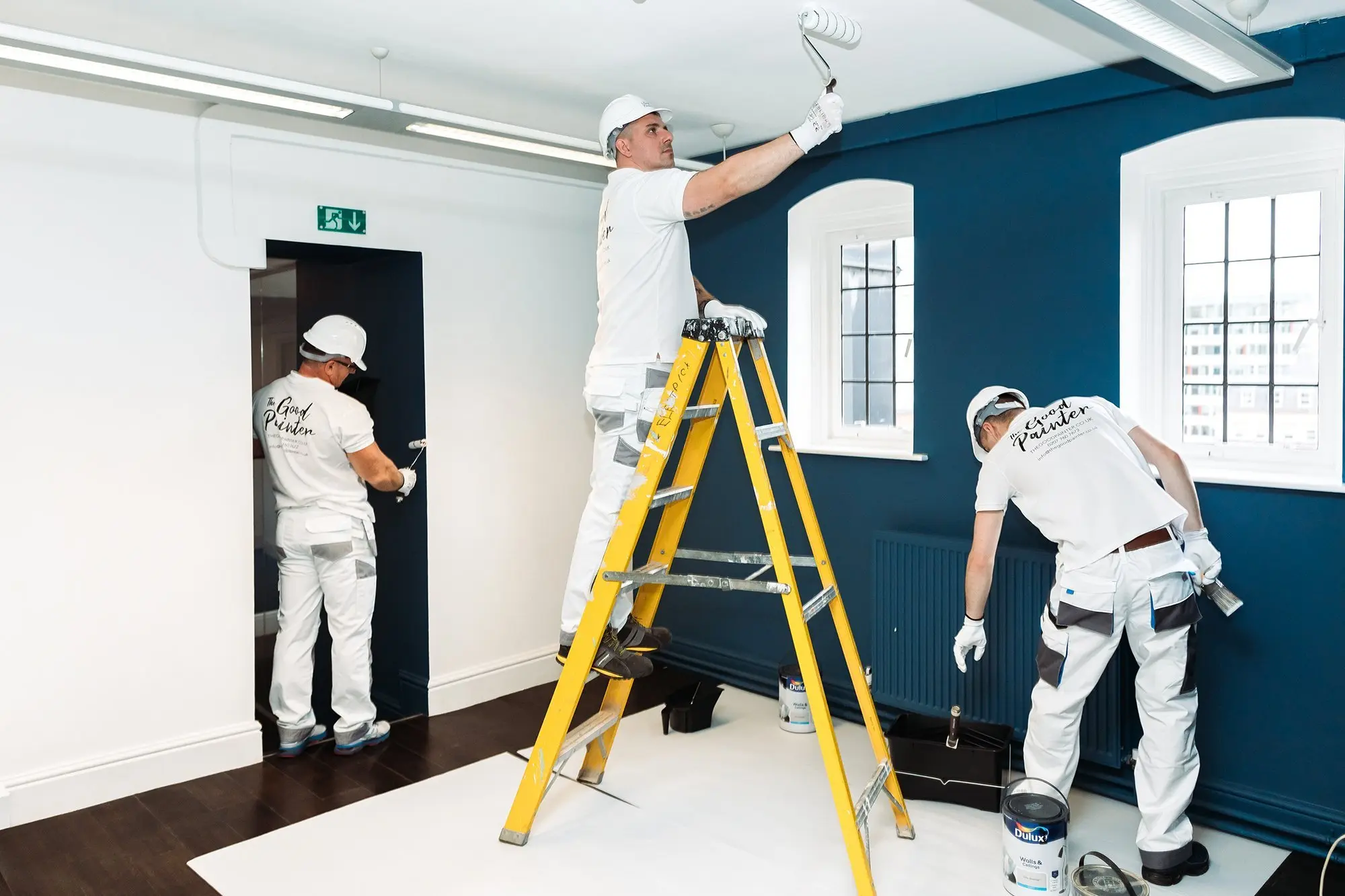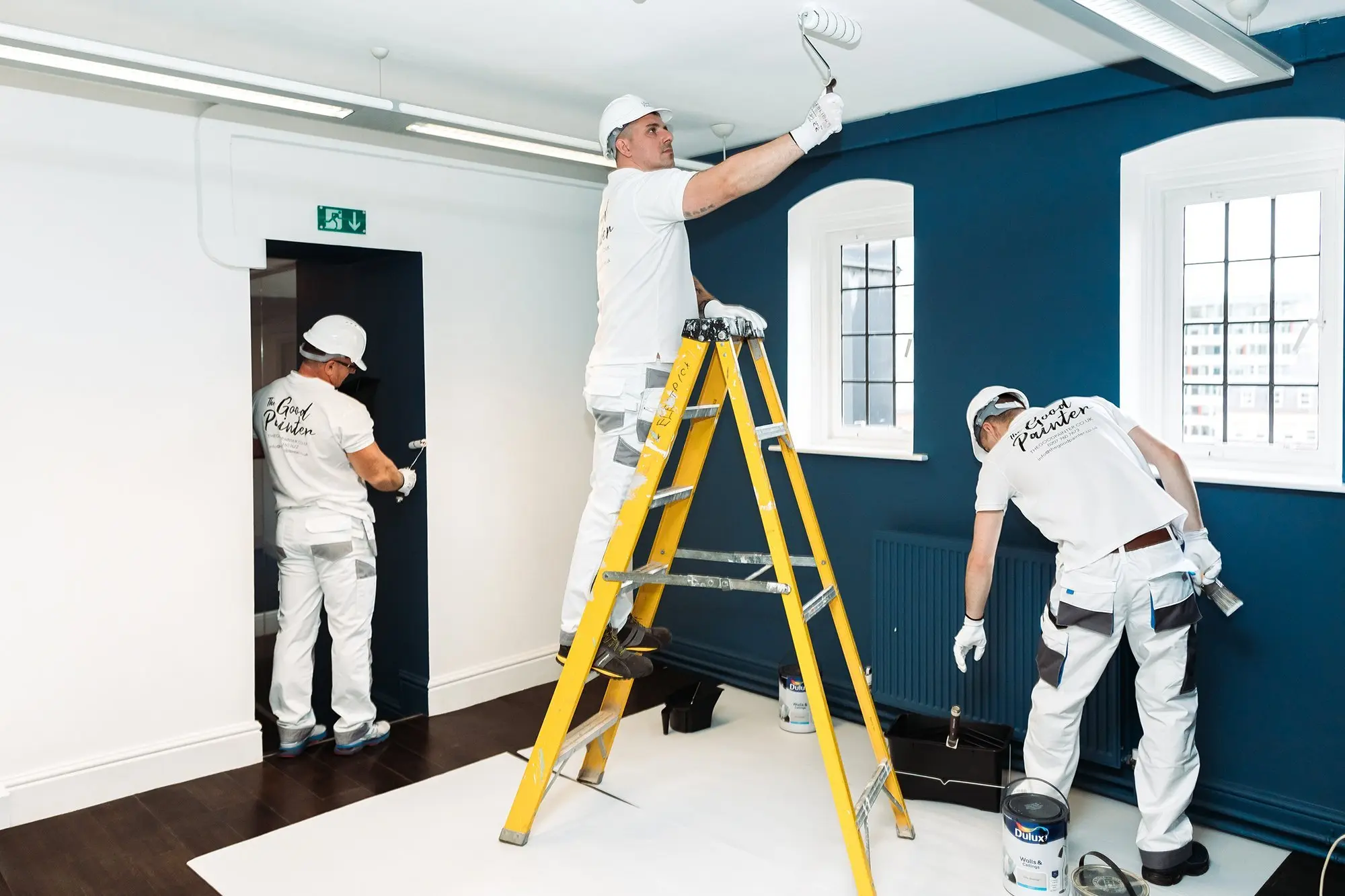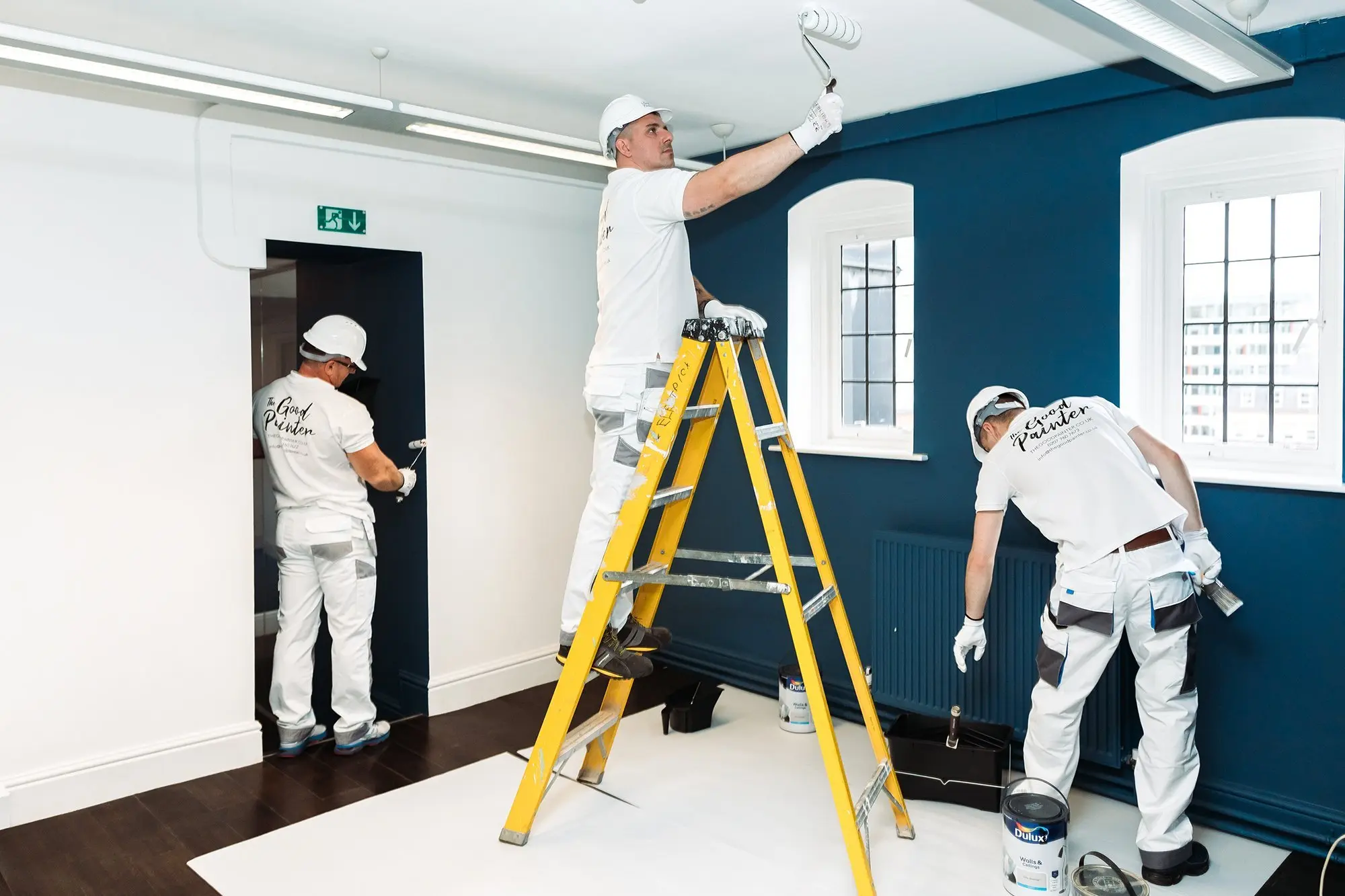As a painter and decorator running your own business, protecting your employees should be one of your top prio…
Painting Company Insurance: Essential Protection for Professional Painters
Running a painting company involves numerous risks that could potentially damage your business financially. From property damage and personal injury claims to equipment theft and professional liability issues, painting contractors face unique challenges that require specialized insurance coverage. This comprehensive guide explores the essential insurance protection every painting company needs to operate safely and successfully.
Understanding the Risks Facing Painting Companies
Painting contractors encounter various risks daily that could result in significant financial losses. Property damage is perhaps the most common concern, as paint spills, overspray, or accidental damage to client property can lead to expensive repair costs. Personal injury claims from slips, falls, or exposure to paint fumes present another major risk category.
Equipment and tool theft represents a substantial financial threat, particularly for companies with expensive spray equipment, scaffolding, and specialized tools. Professional liability issues can arise from color matching errors, improper surface preparation, or failure to meet project specifications. Additionally, employee injuries from ladder falls, chemical exposure, or repetitive strain injuries can result in workers compensation claims.
Weather-related delays and business interruption from equipment breakdown or supplier issues can also impact cash flow and project completion schedules. Understanding these risks is the first step in securing appropriate insurance protection for your painting business.
Essential Insurance Coverage for Painting Companies
General Liability Insurance
General liability insurance forms the foundation of protection for painting companies. This coverage protects against third-party bodily injury and property damage claims that could arise during painting operations. For painters, this includes protection against paint spills on client property, damage from ladders or equipment, and injuries to customers or visitors at job sites.
The coverage extends to legal defense costs, medical expenses, and settlement payments up to policy limits. Most clients and commercial projects require proof of general liability insurance before work can commence, making this coverage essential for business operations.
Professional Liability Insurance
Professional liability insurance, also known as errors and omissions coverage, protects painting contractors against claims related to professional services and workmanship. This includes coverage for color matching errors, improper surface preparation, failure to follow specifications, or advice that leads to client losses.
For painting companies that provide consultation services, color recommendations, or surface preparation advice, professional liability coverage becomes particularly important. The insurance covers legal defense costs and damages awarded in professional negligence claims.
Commercial Property Insurance
Commercial property insurance protects painting company assets including buildings, equipment, tools, paint inventory, and business contents. For contractors operating from a fixed location, this coverage protects against fire, theft, vandalism, and weather damage to business property.
The coverage should include replacement cost protection for expensive equipment like spray systems, compressors, and specialized tools. Business personal property coverage protects paint inventory, supplies, and equipment whether stored at your location or temporarily at job sites.
Commercial Auto Insurance
Painting contractors typically operate multiple vehicles for transporting crews, equipment, and materials to job sites. Commercial auto insurance provides liability coverage for vehicle accidents, as well as physical damage protection for company vehicles.
The coverage should include hired and non-owned auto liability for situations where employees use personal vehicles for business purposes. Given the value of equipment and materials transported, comprehensive and collision coverage becomes essential for protecting business assets.
Workers Compensation Insurance
Workers compensation insurance is legally required in most states for businesses with employees. This coverage provides medical benefits and wage replacement for employees injured while working. For painting companies, common claims include ladder falls, chemical exposure injuries, and repetitive strain injuries from painting activities.
The insurance also provides employer liability protection against lawsuits from injured employees. Premium costs are typically based on payroll and risk classification, making safety programs important for controlling insurance costs.
Tools and Equipment Coverage
Painting contractors invest significantly in specialized tools and equipment including spray systems, scaffolding, ladders, and hand tools. Tools and equipment coverage, often available as an endorsement to commercial property insurance, protects against theft, damage, or loss of business tools.
This coverage is particularly valuable for contractors who store equipment at job sites overnight or transport expensive equipment between locations. The coverage typically includes replacement cost protection and may cover tools owned by employees.
Cyber Liability Insurance
Modern painting companies increasingly rely on digital systems for project management, customer communications, and financial transactions. Cyber liability insurance protects against data breaches, cyberattacks, and technology failures that could compromise client information or disrupt business operations.
The coverage includes notification costs, credit monitoring services, legal expenses, and regulatory fines associated with data breaches. As painting companies adopt more technology solutions, cyber liability protection becomes increasingly important.
Factors Affecting Painting Company Insurance Costs
Several factors influence insurance premiums for painting companies. Business size, measured by annual revenue and number of employees, significantly impacts costs. Larger operations typically face higher premiums due to increased exposure.
The types of projects undertaken affect risk levels and premiums. Residential painting generally presents lower risks than commercial or industrial projects involving hazardous materials or challenging working conditions. Geographic location influences costs due to varying claim frequencies and regulatory requirements.
Safety records and claims history directly impact premium calculations. Companies with strong safety programs and minimal claims typically qualify for better rates. The types and limits of coverage selected also affect overall insurance costs.
Employee training and certification levels can influence premiums, as well-trained crews typically experience fewer accidents. The use of subcontractors versus direct employees affects coverage needs and costs.
Choosing the Right Insurance Provider
Selecting an insurance provider experienced with painting contractor risks ensures proper coverage and competitive pricing. Look for insurers who understand the unique exposures facing painting companies and offer specialized coverage options.
Consider providers who offer risk management resources, safety training materials, and loss control services. These value-added services can help reduce accidents and claims while improving overall business operations.
Evaluate the insurer's financial strength ratings and claims-paying ability to ensure they can meet obligations when claims occur. Review the claims handling process and customer service reputation through industry references and reviews.
Compare coverage options, limits, and deductibles across multiple providers to find the best value. Don't simply choose the lowest premium without ensuring adequate coverage limits and appropriate policy terms.
Risk Management Best Practices
Implementing comprehensive risk management practices can reduce accidents, claims, and insurance costs. Develop written safety procedures for common painting activities including ladder use, chemical handling, and equipment operation.
Provide regular safety training for all employees covering proper techniques, hazard recognition, and emergency procedures. Maintain safety equipment including personal protective equipment, first aid supplies, and emergency communication devices.
Conduct regular equipment inspections and maintenance to prevent failures that could cause accidents or property damage. Document all safety training, inspections, and incident reports to demonstrate commitment to risk management.
Establish clear contracts that define scope of work, responsibilities, and liability limitations. Require certificates of insurance from subcontractors and ensure they maintain adequate coverage levels.
Claims Management and Prevention
When accidents or claims occur, prompt notification to your insurance carrier is essential. Document the incident thoroughly with photographs, witness statements, and detailed reports. Cooperate fully with the insurance company's investigation while protecting your business interests.
Implement corrective actions to prevent similar incidents in the future. Review claims regularly to identify patterns or trends that might indicate systemic issues requiring attention.
Maintain detailed project documentation including contracts, change orders, progress photos, and completion certificates. This documentation can be valuable in defending against professional liability claims.
Conclusion
Comprehensive insurance protection is essential for painting companies to operate safely and successfully in today's business environment. The combination of general liability, professional liability, property, auto, and workers compensation coverage provides a solid foundation of protection against the major risks facing painting contractors.
Regular review of coverage needs, implementation of strong risk management practices, and partnership with experienced insurance professionals help ensure adequate protection while controlling costs. By investing in proper insurance coverage, painting companies can focus on delivering quality services while protecting their financial future.
The painting industry continues to evolve with new technologies, materials, and techniques. Staying current with insurance needs and coverage options ensures your business remains properly protected as it grows and adapts to changing market conditions.
Frequently Asked Questions
What is the most important insurance coverage for painting companies?
General liability insurance is typically considered the most essential coverage as it protects against third-party property damage and bodily injury claims, which are common risks in painting operations.
Do painting contractors need professional liability insurance?
Yes, professional liability insurance is important for painting contractors as it covers claims related to workmanship errors, color matching mistakes, and failure to meet project specifications.
How much does painting company insurance typically cost?
Insurance costs vary based on business size, location, services offered, and claims history. Small painting companies might pay $1,000-$3,000 annually for basic coverage, while larger operations may pay significantly more.
Is workers compensation insurance required for painting companies?
Workers compensation insurance is legally required in most states for businesses with employees. Requirements vary by state, so check local regulations.
What should painting contractors look for in an insurance provider?
Look for providers with experience in contractor insurance, strong financial ratings, good claims handling reputation, and value-added services like safety resources and risk management support.
Does commercial auto insurance cover tools and equipment in vehicles?
Standard commercial auto policies typically provide limited coverage for tools and equipment. Consider adding tools and equipment coverage or increasing business personal property limits for adequate protection.
How can painting companies reduce insurance costs?
Implement strong safety programs, maintain good claims history, invest in employee training, use proper contracts, and work with experienced insurance professionals to optimize coverage and pricing.
What happens if a painting company operates without insurance?
Operating without insurance exposes the business to significant financial risk from lawsuits, property damage claims, and regulatory penalties. Many clients require proof of insurance before work can begin.


 0330 127 2333
0330 127 2333
